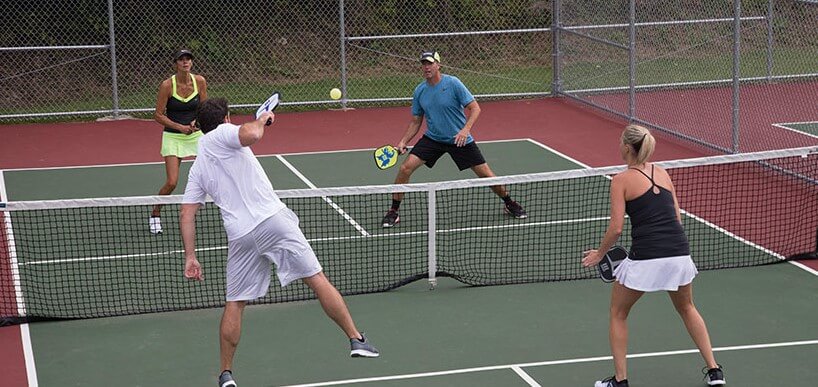by Jenny Foster
Pickleball players can always choose to attack their opponents whenever opportunity presents itself. However, they have a higher chance of winning a point if they attack unexpectedly. But the million-dollar question is, is there an attack strategy that will effectively take the opponents by surprise? Luckily, there is.
Specifically, the attack combination of dink angle and volley is proven to effectively shock opponents in pickleball matches. The following is the breakdown of such attack.
In the combined dink angle–volley attack, a player must be in firm position first at the non-volley zone line and set up an attackable shot, that is, a net-high ball. A low ball should also work because it will allow the player to add a rolling motion to it. Next, the ball should pass over near the middle of the net to achieve the angle needed for the subsequent off-pace volley, complete with rolling motion of the ball. To hit the ball from the middle, a pickleball player should dink shots to force their opponent to hit the ball mid-court.
An important thing to remember about this attack is that when making dinks, the player should be aware of the ball as it goes more to the middle and wait for the right opportunity to hit downward at the opponent’s feet at an angle.

In this combined attack, players should also focus on the rolling motion (volley roll) that they must add to the pickleball. It can be done by lowering the paddle behind the incoming ball, ensuring that their wrist is laid back. The ball is then hit by rolling the forearm. In this case, the wrist is barely used. Instead, all the movement involved in the shot depends on the rolling movement of the forearm.
When making the dink angle-volley attack, pickleball players should remember that their focus is the direction of the ball. Notably, the ball movement generated needs not to be fast but it should be directed at the corner of the opponent’s court.
Now, how does this attack work against opponents?
In most cases, opponents will assume a defense position when receiving dinks. Correspondingly, they would place their paddles in front of them, at the waist level, with the aim of defending against a speeding ball. Expecting a fast ball headed toward them, opponents will be surprised if the ball is hit to roll and land at their feet. In addition, as the ball is directed downwards, they will be forced to hit the ball up.
